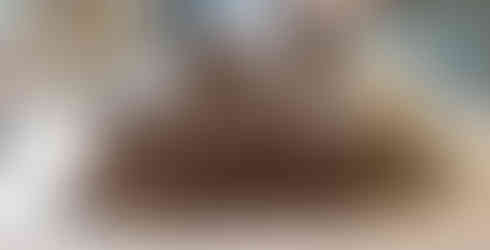Mask Making - Explore another's Face
- Chrissie Burton
- Dec 13, 2017
- 2 min read
Masks are a performance tool that allow you to transform yourself very quickly and simply into all manner of characters and creatures. In this workshop I learnt the process of how to make professional level masks and how performing in them is not as easy as one might think.

At the beginning of this week long process I was given the simple brief 'Fierce Elder'. To make a mask convey a certain character to an audience it has to be enhanced and exaggerated. It helps if you think of your character of an animal and then pull the feature back to human.
The process of mask making is quite lengthy in waiting times but simple so anyone can try at home.
You start with a plaster cast face (ideally of the person that is going to be wearing your mask).
Layer it with rolls of clay to form the structure, ensuring that there is only a very thin layer along the forehead and temples where a masks seat on the face.
Play and form the clay into the wished design - not forgetting the eyelids and upper lip. Build the upper lip up to ensure there is space for the lips to move while acting.
When putting in details like wrinkle keep them graphic in style, making them clear to the audience. These will become more prominent after painting.
Layer over the clay with tinfoil, brown paper, J-cloth and then more brown paper. Use a mix of wallpaper paste and PVA to guild each layer. The smaller the pieces the more detailed it will be. The J-cloth ensures a light but strong mask.
When dry pull the mask off the clay using the tinfoil. I found this bit quite hard and had to cover the insider with more brown paper.
Now its all about painting. For my design I wanted it dark and washed out so I used burnt sienna and white to simply heighten the depth of the mask.
After completing the masks, which I found enjoyable, we then tried performing in them. It was so easy to forget what your mask looked like once it was on and so hard to convey emotion not through your face but through body movements alone. It is helpful to look at children stories and shows for they show great examples of body emotions there.





































Comments